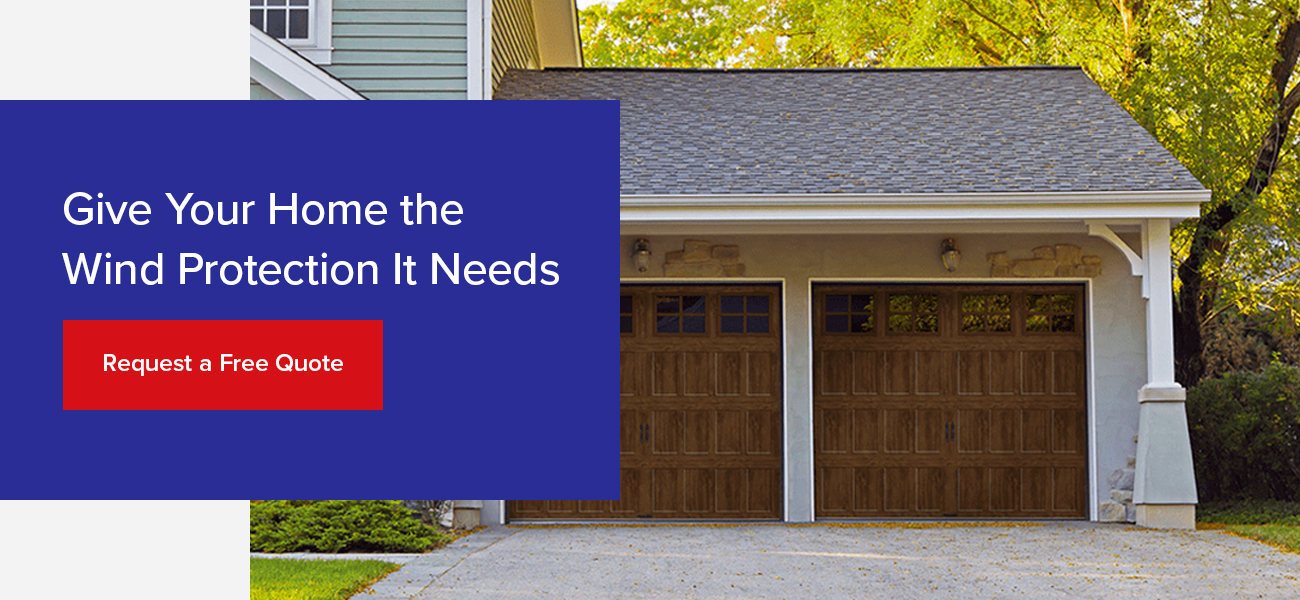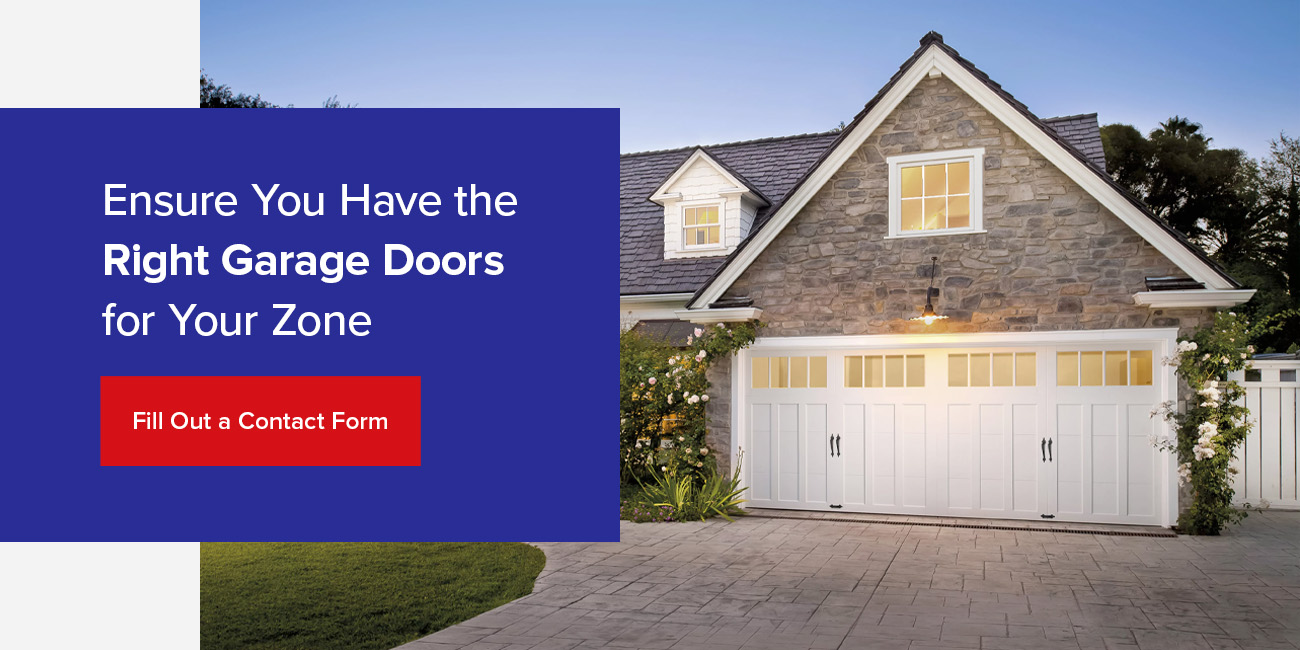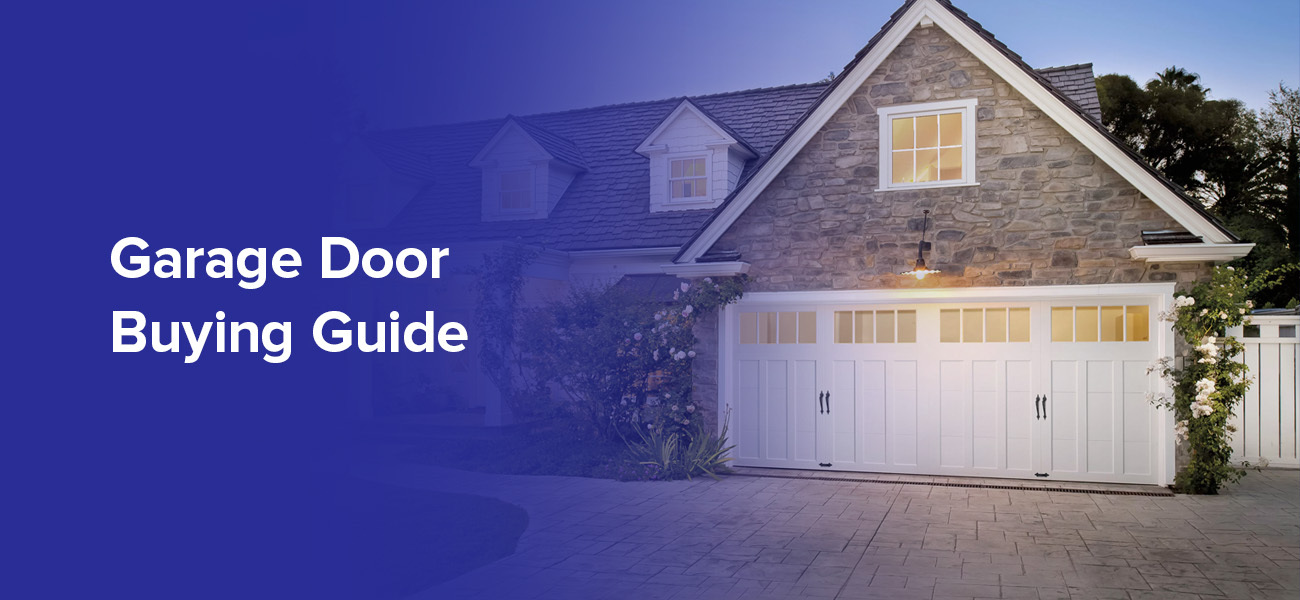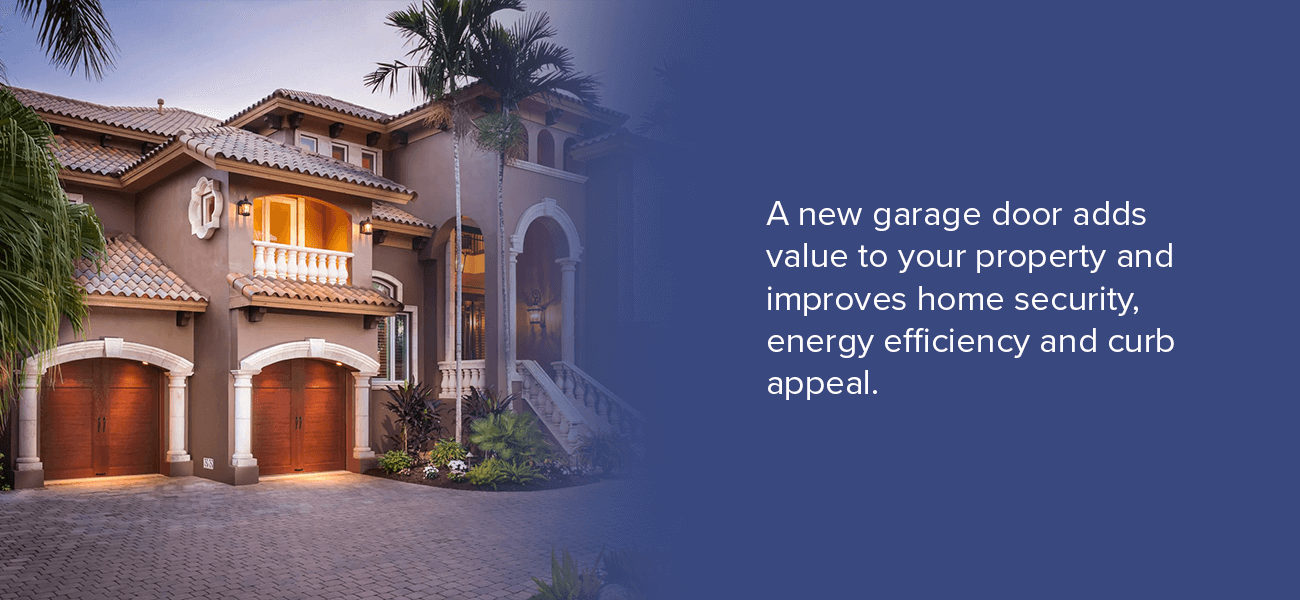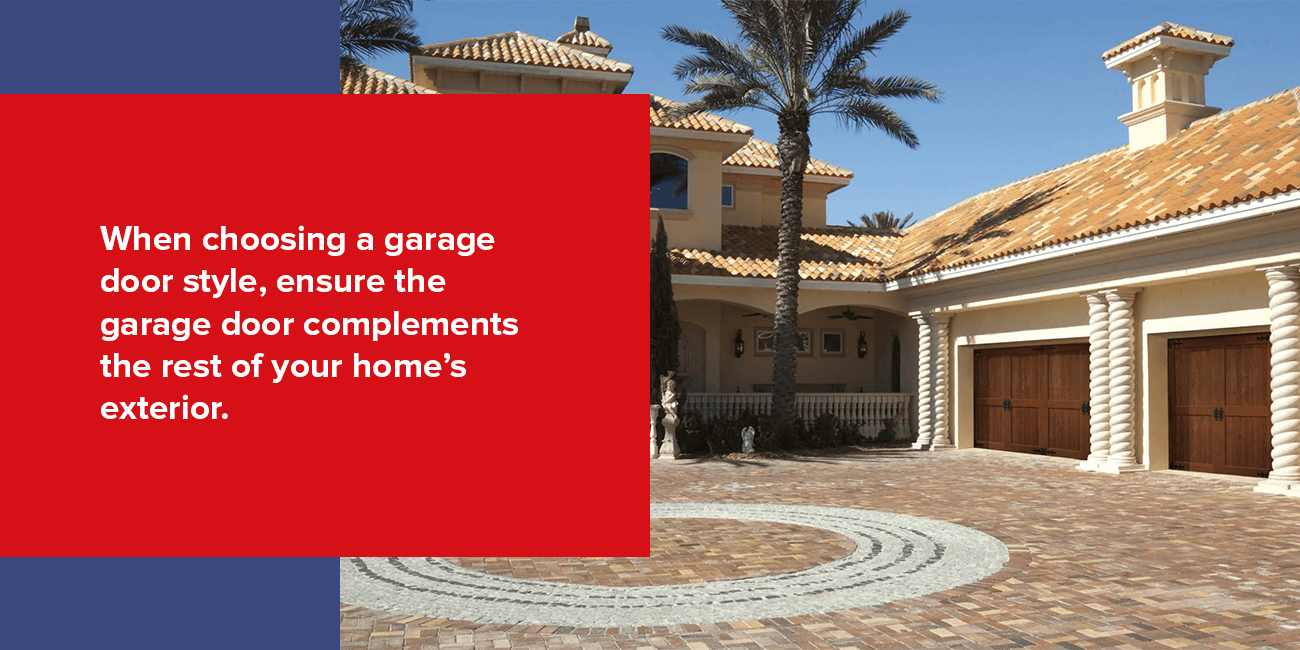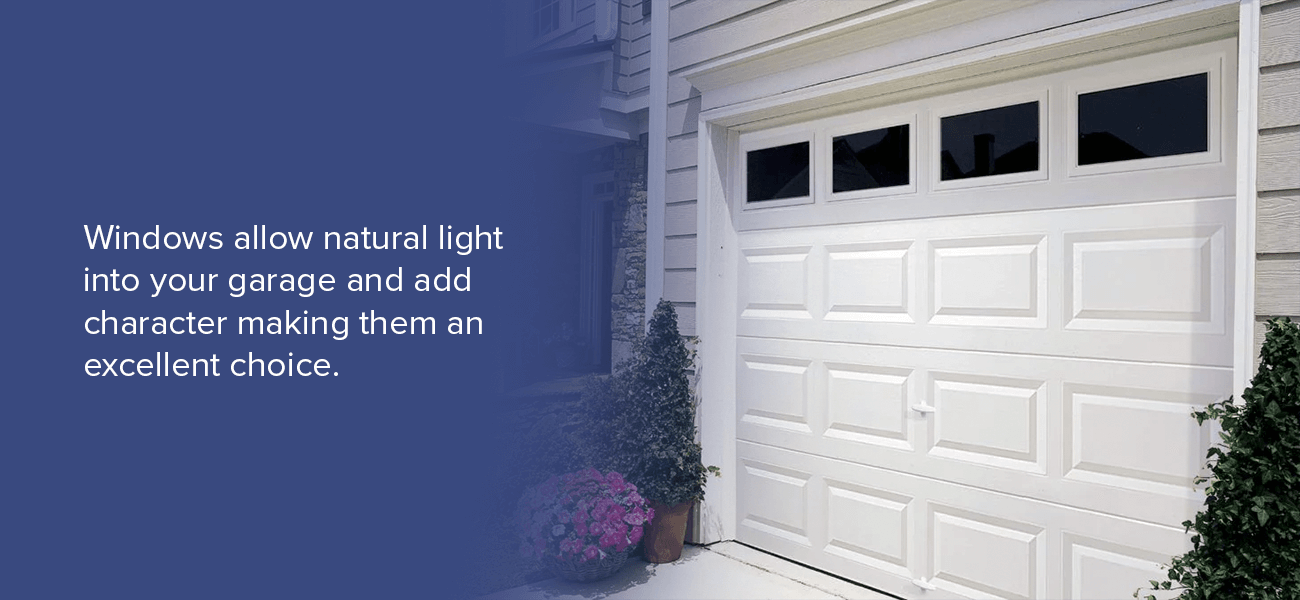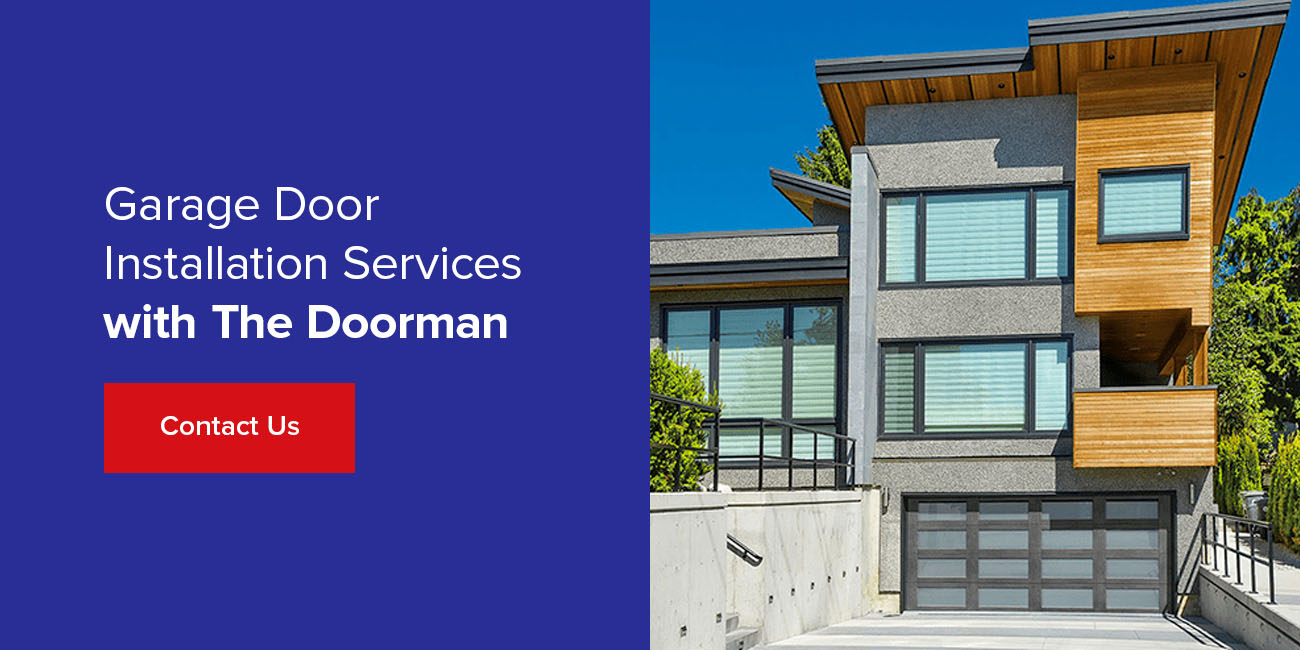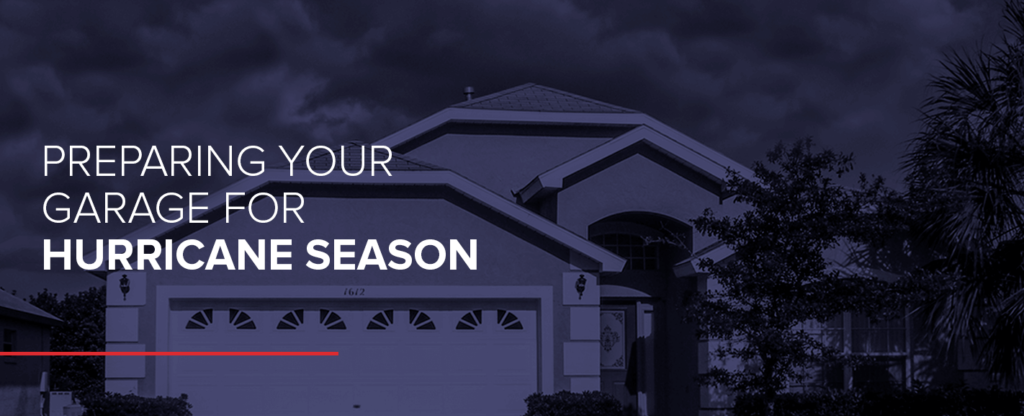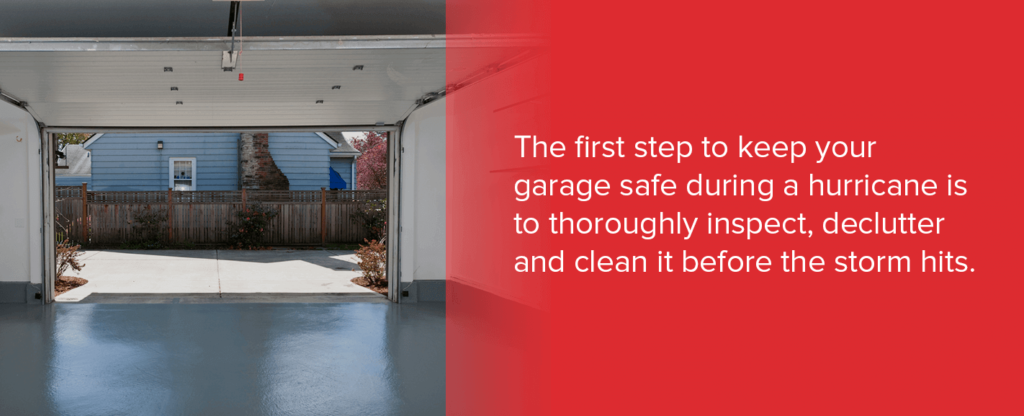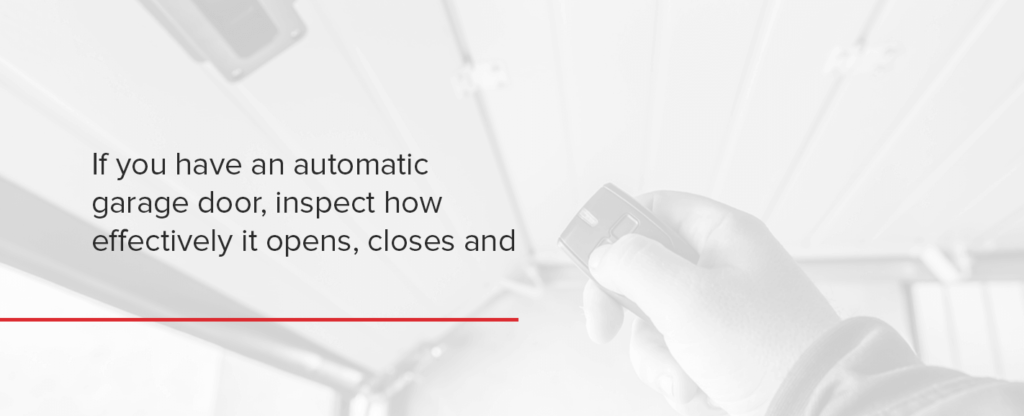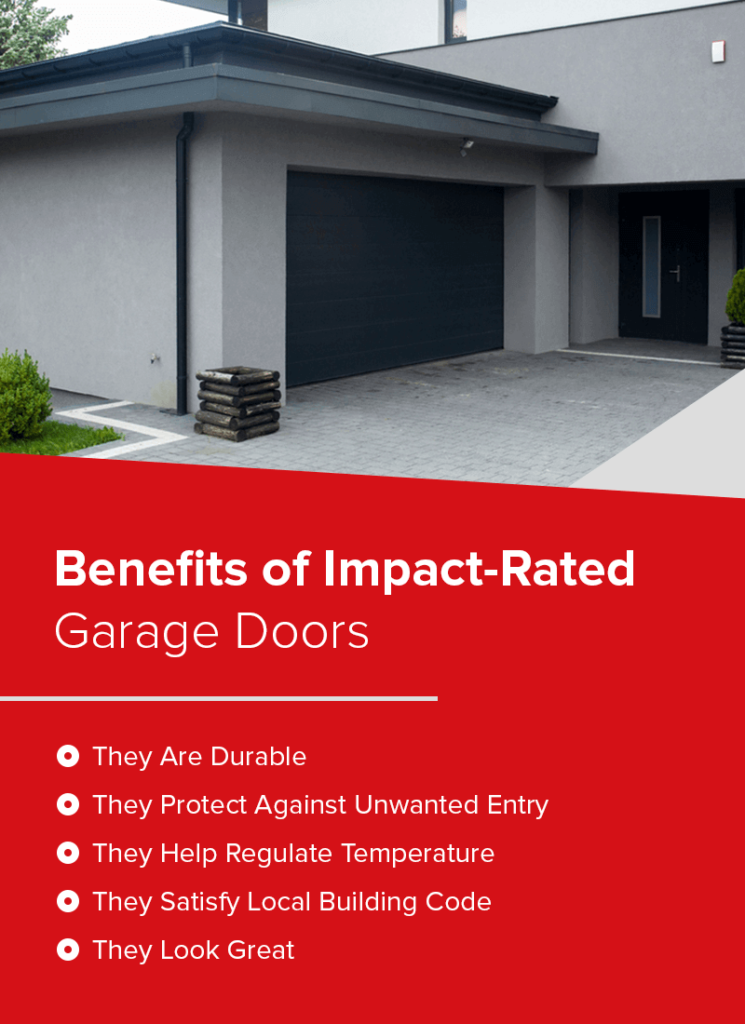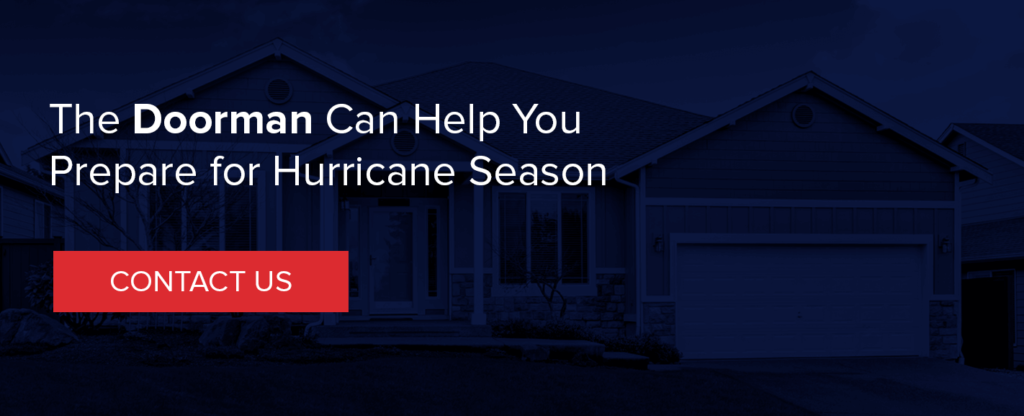What Is a High-Velocity Hurricane Zone?
A high-velocity hurricane zone (HVHZ) is a special section of the Florida Building Code that requires building materials used in the zone to be tested and approved for performance under extreme weather. If you live in Miami-Dane County, Broward County or Palm Beach, you are in an HVHZ. The HVHZ is necessary to protect you and your property during hurricane season.
The Need for the HVHZ Code
Areas in the high-velocity hurricane zone often experience Category 3 to 5 hurricanes, which can cause serious damage to homes and buildings. There has been an increase in the frequency, intensity and duration of hurricanes in the North Atlantic since the 1980s. Hurricane Andrew devasted Southern Florida in 1992 with high levels of damage that brought the need for a change in Florida’s building codes.
The code was established to protect properties and homeowners by subjecting building materials to intense testing. Exterior windows and doors now have to be wind-resistant and impact-rated before they are installed in homes. The tests simulate hurricanes and wind-borne debris impact to ensure that products have the ability to withstand extreme weather events.
Meeting HVHZ and Florida Building Code Standards
For building products to meet HVHZ standards, they have to be put through a series of rigorous tests. These include product testing, laboratory tests, large and small missile tests.
During testing for windows, a six-foot-long 2×4 lumber weighing nine pounds is initially fired at the center of the glass at 50 feet per second. Then it is fired again at the sides and at the window frames. The glass will also be tested for its pressure resistance. An additional test is done, which involves pellets fired at the window at 80 feet per second.
For garage doors, a 2-by-4 piece of lumber is shot out of a cannon three different times to ensure the door can withstand heavy impact. If you are planning on installing a new garage door or windows in Miami-Dade and Broward County, you have to ensure you choose building materials that meet HVHZ standards.
The Doorman Is Here to Help Protect Your Property
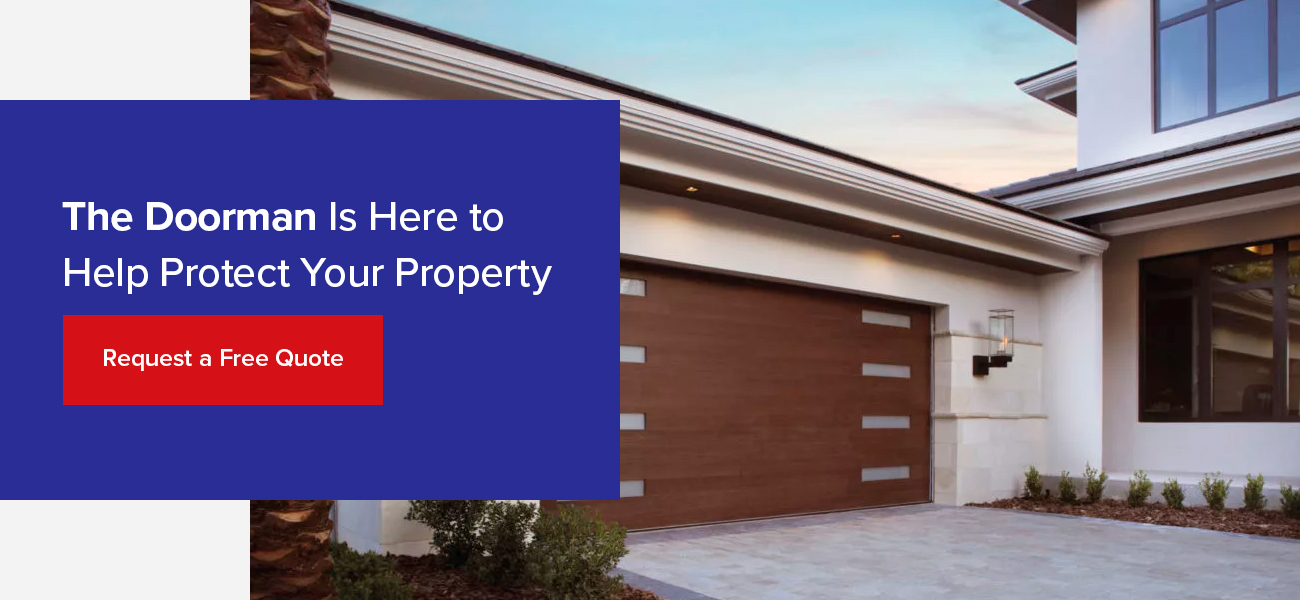
Whether you live in HVHZ or any other part of Florida, it’s always best to be prepared, especially during hurricane season. At The Doorman, we provide garage door installations using the highest quality building materials that have been tested and approved for impact and wind resistance.
If you want to learn more about protection systems for your property, fill out our online form to get in touch with us.
What Is Wind-Borne Debris?
Wind-borne debris is any scattered natural material or remains carried by the wind. Depending on the severity of the wind, the debris can cause serious property damage, injury and fatalities. That is why areas designated as wind-borne debris regions have specific building requirements to protect them from impact.
Where Does Wind-Borne Debris Occur?
This type of debris usually occurs in coastal or inland areas that are situated within one mile of coastal mean high water and can get windspeeds of 130 mph or higher. Any areas with windspeed higher than 140 mph are also designated as wind-borne debris regions by the Florida Building Code. Wind-borne debris regions experience greater property damage, injury or fatalities from flying and falling debris during a hurricane. The southeast region in Florida is one of the areas that are prone to wind-borne debris.
Wind-Borne Debris Impact Resistance
Hurricane Andrew of 1992 was a Category 5 hurricane with wind gusts as high as 177 mph, destroying over 25,000 homes and damaging 100,000. The damage that Andrew caused drove the need for building codes that prioritized hurricane protection. Windows and doors now have to be impact resistant to protect homes from wind-borne debris.
To ensure impact resistance, windows and doors have to go through a test that involves a 2-by-4 piece of wood being shot out of a cannon at a garage door three times or rigorous missile testing for glass windows. The tests aim to simulate hurricane conditions and determine whether materials can withstand them.
Florida Building Code now requires protection systems for properties located in these hurricane-prone regions. Protective measures include large missile impact-rated windows, doors and shutters with state approval. The strength and durability of impact-rated materials can help safeguard your home from the destruction caused by hurricanes.
Impact Rating
When your windows or garage doors have an impact rating, that means they have been laboratory tested to perform highly under extreme winds and pressure. An impact-rated garage can be hit by heavy materials and continue operating properly.
Miami-Dade, Broward and Coastal Palm Beach Counties are considered to be in a high-velocity hurricane zone (HVHZ) because this area in Florida has been designated by the state as more hurricane-prone than other locations. Building materials used in the HVHZ zone all need to be impact-rated. Ensuring your windows and doors are impact resistant is still encouraged for people living outside these areas.
Protection From Wind-Borne Debris
When you want to give your home the ultimate protection from extreme weather without compromising on aesthetic appeal, The Doorman has you covered. We offer a wide range of impact-resistant patio and garage doors from trusted leading manufacturers in the industry. As a full-service door company, we also do quality installations, repairs and maintenance to ensure your home is always protected during hurricane season.
Fill out our online form to request an estimate.
Are You Required to Have a Wind-Resistant Garage Door?
Are You Required to Have a Wind-Resistant Garage Door?
Modern building codes require garage doors to be wind-resistant, but the degree of wind resistance depends on the area you live in. Some states have special requirements due to extreme weather events.
Why Are Wind-Resistant Garage Doors Necessary?
Garage doors protect your property from wind and storm damage caused by extreme weather events such as hurricanes or high winds. They are also necessary for people living in areas that do not experience these conditions because an occasional thunderstorm can occur that can also cause minor or major wind damage.
A failed garage door can serve as an entry point for high winds, contributing to a buildup of internal pressure that leads to roof and structural damage. If you live in hurricane-prone areas, your garage door must be wind-resistant with a high wind code rate for maximum protection.
In 1992, South Florida was hit by Hurricane Andrew, a Category 5 hurricane, which propelled the change in building codes. Many states and cities have since adopted the International Building Code (IBC) to protect buildings against hurricane-forced winds in their area.
States With Special Requirements for Garage Doors
While wind-resistant garage doors are a requirement in most places, some states are more susceptible to frequent and strong gusts of wind. As a result of terrain and weather conditions, they have higher requirements. Depending on where you live, there will be varying risk levels that will determine the garage wind rating that will best protect your home. Garage doors have special requirements in the following states:
- Florida
- California
- Missouri
- Utah
- Kansas
- Nevada
How Do You Know If Your Garage Door Is Wind-Resistant?
One of the easiest ways to find out if your garage door is wind-rated is by checking it for a label. The label should show your door’s Windcode® rating, which features the maximum windspeed it can withstand and the pressure it can endure measured in pounds per square foot (PSF). If you live in Florida, your label will feature a “W” rating which ranges from W1 to W9 depending on the level of wind resistance your garage door has.
If you cannot find the label, there is no way of knowing if your garage door is wind-rated. It is not uncommon since wind-related requirements for garage doors were only implemented in 2006.
Give Your Home the Wind Protection It Needs
Whether you need a new wind-resistant garage door or repairs for the one you have, The Doorman will provide a long-lasting solution for you. Fill out our online form to get in touch with us.
How to Find Your Home’s Wind Zone
Experts at the United States Department of Housing and Urban Development (HUD) divide wind strengths around the U.S. into three zones. Understanding which zone you live in can help you keep your family and home safe during weather events with strong winds, such as tropical storms or hurricanes.
Types of Wind Zone Ratings
When you want to invest in products for your home, it’s best to follow safety standards based on the area you live in:
- Zone 1: A home in this zone must be able to resist wind speeds reaching 70 miles per hour (mph).
- Zone 2: Houses in this zone often lie along the coast or a body of water and must withstand wind speeds up to 100 mph.
- Zone 3: A residential property in this zone sees the highest wind speeds and must resist winds at speeds up to 110 mph.
Finding Your Current Home’s Wind Zone
Knowing your wind zone and how to prepare your home for strong winds best can give you increased peace of mind. According to the HUD, each residential property must have a data plate indicating the home’s Wind Zone. You can locate this data plate inside your home’s electrical panel, kitchen cabinet or bedroom closet. If you cannot find the data plate, you can request a new one from the Institute for Building Technology and Safety (IBTS).
Ensure your garage door reflects the appropriate WindCode®, the rating of the amount of wind pressure your garage door can withstand. Follow local guidelines to determine your wind zone rating.
In Florida, about two-thirds of the state fall into Zone 2. Other areas, such as the Keys and several Gulf Coast counties around South Florida, are classified as Zone 3. There are a few exposure categories in this region:
- Exposure B: These areas’ terrain may include wooded spaces or city environments with closely spaced obstructions.
- Exposure C: The open landscape of these flat grounds or grasslands may have scattered obstructions or shorelines near small bodies of water.
- Exposure D: A structure or terrain in this category is located within 600 feet of an ocean or a body of water, measuring at least 5,000 feet.
Ensure You Have the Right Garage Doors for Your Zone
The Doorman is a Clopay® Authorized Dealer™ in Southeast Florida. Our technicians can ensure your garage door meets your zone guidelines. To request an inspection, repair or installation, fill out a contact form today!
Garage Door Buying Guide
Your garage door is one of the most noticeable parts of your home’s exterior. Thus, it significantly impacts your home’s curb appeal and security. Purchasing or replacing a garage door requires careful thinking and planning. If you are looking for garage door buying guidance, read this guide for our expert tips.
Why Replace Your Garage Door
Installing a high-quality and modern garage door offers many benefits for your home. A new garage door adds value to your property and improves home security, energy efficiency and curb appeal. Most newer garage doors come with added features that allow you to access, monitor and control your home with your smart devices.
Instead of relying on a few remote controls, you can conveniently open and close your garage with a mobile phone, tablet or laptop anywhere in the world — all you need is an internet connection. If your children left their keys inside, you can let them in without driving home to grant them access. Similarly, you can open the door for couriers to safely place packages in your garage and close it when they leave while monitoring the activity on your smartphone.
Altogether, replacing your garage door with a new model when it no longer works can help you increase your home’s security and create a more convenient experience for you and your family.
When Is the Best Time to Buy Garage Doors?
In some ways, the best time to buy garage doors depends on where you live. If you live in a tropical region like Florida, replacing your garage door before hurricane season prepares your home for tropical storms. As hurricane season runs from June 1 to November 30, spring is optimal for installing a new garage door. If it is a mild winter, you can replace your garage door during those months.
What to Look for When Buying a New Garage Door
Here are the vital factors to consider when buying a new garage door:
1. Security
As the largest entrance to your home, a secure garage door protects your loved ones and belongings from danger or theft. New garage doors have advanced security options through smartphone compatibility. You can open and close the door using an app connecting to your garage door or check its status anywhere.
2. Function
Although the traditional purpose for garages is vehicle storage, many homeowners have alternative intentions for their garage space. Some of these uses include:
- Children’s play area
- Art studio
- Laundry room
- Workshop
- Entertainment area
Determining your garage space function will influence what kind of garage door might suit your needs best. For example, vehicle storage spaces or laundry rooms may require less insulation. In contrast, insulation is necessary for art studios, entertainment areas or any purpose involving extended time spent in the garage. Likewise, a children’s play area will need advanced safety features.
3. Insulation
Insulation has emerged as a crucial addition to garage doors. Insulation can increase energy efficiency in both harsh and moderate climates. The insulation traps heat inside the garage in harsher climates and keeps cool air inside during tropical climates. This helps you decrease your air conditioning reliance.
There are generally three options for garage door insulation — single-layer, double-layer and triple-layer.
4. Hurricane Protection
If you live in a South Atlantic state, hurricane protection is necessary. Wind-resistant garage doors are pressure-rated to withstand high winds and flying debris during hurricanes, tornadoes and other storms. Find your area’s recommended garage door pressure rating and install a door that meets that standard.
How to Choose the Right Garage Door
Besides noting what to look for when buying of garage door, you may also wonder what type of garage door you should buy. Here are six garage door buying tips to consider when purchasing a new garage door for your home.
1. Budget
Garage door costs vary according to several factors, including:
- Material
- Insulation rating
- Style
- Hardware
- Number of doors
- Size
As you try to find a garage door within your budget, consider which variables are most important. Weigh the aesthetic against practical considerations, like insulation and durability.
2. Material
The material you choose for your garage door influences aesthetic, maintenance and durability. The primary materials for garage doors include:
- Aluminum and glass: Aluminum and glass doors have simple architectural lines, providing a modern aesthetic with plenty of natural light. They are also lightweight, durable, energy-efficient, resistant to corrosion, require less maintenance and have strong insulators.
- Steel: Steel is cost-effective, durable and easy to maintain. Steel garage doors can withstand any climate and resist warping or cracking from moisture. They also provide a modern aesthetic with many customization options.
- Wood: Wooden garage doors provide a natural aesthetic and endless customization options. They are durable against impact, have high inherent R-values for insulation and are eco-friendly. With proper preventive measures, a wooden garage door can last decades.
- Composite: Composite garage door material consists of recycled wood and plastic fibers. This material is more affordable and lightweight than wooden garage doors. Composite garage doors mimic wooden garage doors’ natural aesthetic and have higher resistance to mold and rots.
3. Style
When choosing a garage door style, ensure the garage door complements the rest of your home’s exterior. The main style categories for garage doors include:
- Carriage house
- Contemporary
- Flush
- Long-raised
- Short-raised
4. Finish or Color
The garage door finish and color can add a personal touch to your door and increases curb appeal. You can apply a wood-grain finish to a steel door, opt for a neutral shade or choose a solid hue rich in color, like burgundy or dark green. The finish you choose could also depend on the door’s material. For example, if you select a wooden door, you may need a weather-resistant finish to protect the wood against excess moisture.
There are other essential things to consider with finish or color:
- The color and finish should blend well with the rest of your home’s color and exterior style.
- Neutral colors like black, gray, tan, brown or white blend well with almost any exterior style, so they are often safe.
- Darker shades tend to fade faster in direct sunlight. You may opt for a lighter shade if your garage door receives plenty of sunlight.
5. Windows
Windows allow natural light into your garage and add character making them an excellent choice. There are many options to choose from, including:
- A row of square windows
- Arched or cathedral-style windows
- Glass grid windows
- Rectangular columns
You can also find impact-resistant glass if you live in high-wind areas or obstructive glaze to maintain privacy while letting in natural light.
6. Size
To determine the garage door size you need, make a few measurements on your existing garage door. These measurements include the rough opening, left and right side room, headroom and backroom. Once you have these measurements, take them to your garage door dealer and they will help you find the right garage door size.
Where to Buy a New Garage Door
Choosing a garage door is crucial, so it helps if you partner with a trusted vendor. The Doorman of Southeast Florida has a wide range of residential garage doors to choose from, including doors impact-rated to withstand the annual hurricane season.
We only provide top-quality garage door installation and repair services at The Doorman of Southeast Florida. Contact us today for a free quote or schedule your $39.95 garage door tune-up!
Preparing Your Garage for Hurricane Season
The Atlantic hurricane season lasts from June through November, with August through October being the peak season for activity. Hurricanes are responsible for a substantial amount of property damage and loss. The United States government estimates the total cost of weather-related property damage in the U.S. since 1980 is around 1.75 trillion dollars, with Florida accounting for more than half of the country’s annual hurricane spending. Coastal Florida is not the only risk area — the impacts of a hurricane stretch across every part of the state, including inland.
With the looming threat of property damage on every Florida homeowner’s mind, is the garage safe in a hurricane? Read on to review what you need to know about hurricane season garage preparation.
Prepare Your Garage Door for Hurricanes
The Consequences of a Failed Garage Door During Hurricane Season
The door is the first and most important line of defense you have against hurricane-related garage damage. Here is what can happen if you experience garage door failure during hurricane season:
- Costly door damage: High winds and flying debris threaten the structural integrity of your garage door. If your door is old, worn or already vulnerable, the severe weather can dent, crack or cause the door to cave in, potentially damaging any vehicles or belongings inside. This level of garage door damage can be costly to repair and may require a total door replacement.
- Leaks, flooding and water damage: If your garage door is damaged or otherwise ineffective during a hurricane, your garage can leak or flood. If you own an attached garage, this is bad news for the belongings you store inside and for the leaks and flooding that can infiltrate your home. Excessive moisture indoors can cause structural rot, rust and mold growth.
- Easy entry to your garage and home: A damaged garage door provides more accessible entry to potential looters after a hurricane. If your garage is attached to your house, this also means easier access to your home and its contents.
How to Prevent Hurricane Damage to Your Garage This Hurricane Season
The garage is where many people store their vehicles, sentimental items, unused furniture, tools, food, bicycles, kayaks and other belongings. Some owners also have upstairs apartments or office space above their garage. For these reasons, keeping your garage safe during severe weather is crucial. Keep reading to learn how to hurricane-proof your garage and create an effective defense against strong winds, heavy rains, flooding and flying debris.
1. Clean and Declutter the Inside
While garages provide convenient storage space for all types of personal belongings, they can quickly become cluttered and disorganized. During a hurricane, excessive debris, dirt and clutter mean a higher chance that those items can be damaged, and it creates an unsafe environment full of tripping hazards and potentially dangerous items. The first step to keep your garage safe during a hurricane is to thoroughly inspect, declutter and clean it before the storm hits.
Here is how to prepare your garage for a hurricane:
- Discard and organize clutter: The cleaner your garage is, the easier it will be to identify and repair any vulnerable spots before hurricane season. It also minimizes damage to belongings, should your garage door fail. If your garage does not have any sort of organizational system, this is a perfect time to implement one. Use shelves, overhead storage racks and labeled totes to keep items separated and off the ground. Remove any garbage and unwanted items, and sweep the floor once the area is clear.
- Relocate sentimental and important items: Typically, temperature-controlled garages are the ideal place to store sentimental or important items, like paperwork, childhood belongings, family heirlooms and antiques. Before a storm, it’s a good idea to relocate these things somewhere safer, like a safe deposit box or inside a weather-proof storage vault.
- Fix electrical wiring: Exposed and frayed electrical wires can cause electrocution or fire, especially if your garage floods or suffers severe structural damage during a storm. Inspect all wiring and call an electrician if repairs are needed. Do not try to repair complex wiring on your own.
- Remove flammables and explosives: Remove all flammable and explosive materials from your garage before a storm, including gasoline, aerosol cans, fireworks, firearms and pool chemicals.
- Use waterproof storage containers: When storing belongings inside your garage, use sealed waterproof totes with lids and keep them above ground level so leaks or floods will not damage them. For large items and furniture you cannot move above ground level, wrap them in plastic and use floor raisers if possible.
2. Protect Against Water Damage and Flooding
Water damage ranges from a few puddles on your garage floor to full-scale wall and floor damage. To protect your items from water damage and prevent garage flooding during hurricane season, take the following steps:
- Put sandbags out front: Sandbags are an extra precaution many homeowners take during a hurricane. If you live in a coastal area or near a body of water, it’s a good idea to keep some on hand throughout the season. Use tarps and pile the sandbags in rows, stacked like a pyramid, to absorb runoff.
- Seal around the windows and door: Seal around your garage windows and garage door for extra protection against leaks. Apply sealant tape or weatherstripping along the bottom and threshold of your garage door and around each window.
- Install a drainage system: If you live in a low depression or collect a lot of runoff during regular rainstorms, consider installing a drainage system in your driveway outside your garage to re-route water during a hurricane.
- Fix cracks and holes: Weak structural areas are prone to leak during rain and are especially susceptible to damage by high winds. Inspect the walls, door, windows and foundation of your garage before hurricane season and contact a professional to assess and repair any cracks and holes.
3. Prepare Your Garage Door for Hurricanes
A secure garage door can make all the difference between a safe, dry garage or a flood and structural damage. When protecting your garage during hurricane season, make sure your windows and door are ready to handle the impact of rain, wind and flying debris. Prepare your garage door for hurricanes by taking the following precautions:
- Inspect door performance: If you have an automatic garage door, inspect how effectively it opens, closes and locks. Note any abnormal sounds, like rattling or squeaking. Note any gaps between the garage door and the floor or walls, as well as rust spots, dents or corroded brackets and fixtures. Even if everything is operating correctly and appears intact, schedule an inspection and tune-up appointment with a garage door professional to make sure everything is as structurally sound as possible.
- Install locks: If your door and windows do not already have locks, this is a great time to install them. Locks offer additional protection against unwanted entry and leaks.
- Add braces or panels: Add additional bracing to the inside of your garage door with vertical or horizontal hurricane panels, reinforced bars or two-by-fours. Close and lock your windows and board them with a plywood brace. When installing these braces and panels, make sure they are secure, so they do not come loose and become a hazard in high wind.
- Replace your door: While there are some garage options that can boost your door’s durability, like retrofitting for a stronger door, installing an impact-rated garage door is the best way to get maximum hurricane protection. This is especially important if your existing door is damaged, worn, outdated or made of flimsy material.
Benefits of Impact-Rated Garage Doors
An impact-rated garage door is a door that has been tested and verified as strong enough to withstand certain degrees of damage caused by wind and impact from flying debris. If you live in Florida, an impact-rated garage door is the best decision you can make for your garage for the following reasons.
1. They Are Durable
One of the most significant advantages of impact-rated doors is that they are constructed out of strong, long-lasting and weather-resistant materials — such as steel and composite — that are durable in extreme weather. Depending on the specific door, it might have additional safety features like integrated insulation, hot-dipped galvanized layers, rust-prevention brackets and WindCode® reinforcement. This level of durability keeps your door safe for years to come and will help protect your belongings.
2. They Protect Against Unwanted Entry
Unfortunately, severe weather isn’t the only thing homeowners need to be cautious of during a hurricane. Post-hurricane home and business looting is a risk to be aware of, especially if you evacuate your house. For homes with an attached garage, a weak garage door provides easy access for these looters to break in and enter your house. An impact-rated garage door is made of strong steel that is nearly impossible to penetrate, making it the ideal form of protection against unwanted entry.
3. They Help Regulate Temperature
In addition to added protection during hurricanes, an insulated door will keep the temperature regulated in your garage, which can keep energy costs low. Garages with a regulated temperature are more comfortable to spend time in, turning your garage into a year-round space. For those who work on projects in the garage or have an at-home gym, impact-rated doors with insulation are a perfect choice. This temperature regulation and insulation also create the ideal environment for food storage and temperature-sensitive items, like electronics, important documents and antiques.
4. They Satisfy Local Building Code
Impact-rated garage doors satisfy local building codes in many areas around Florida. Because the Sunshine State is prone to an active hurricane season, several counties and cities — especially those in High-Velocity Hurricane Zones (HVHZ) — have specific building codes in place to protect garage doors and windows from missile-like flying debris and strong winds. Possible wind-borne debris that threatens to damage your garage door includes tree branches, outdoor furniture, garbage cans, uprooted fencing, rocks and signs.
The HVHZ in Florida covers all of Broward and Miami-Dade counties, but these are not the only areas at risk. Because they satisfy these building codes and offer supreme protection, impact- and WindCode®-rated garage doors might also help lower your insurance costs or meet coverage requirements.
5. They Look Great
With an impact-rated garage door, you never have to sacrifice style for protection. Industry-leading garage door manufacturers offer a variety of impact-rated styles for you to choose from, including:
- Wood or faux wood finishes in a variety of stains and colors.
- Modern, traditional or carriage house style doors.
- Neutral, chic steel and factory-finished paint selections.
You can also choose the best type, style and finish of your garage door windows to create the perfect fit for your home. These attractive design options, combined with the numerous benefits of owning an impact-rated door in a hurricane-prone area, can boost your home’s curb appeal and value, making it more appealing to future buyers.
How to Inspect Your Garage After a Hurricane
If a hurricane has swept through your area, you need to inspect your home for damage so you know which areas need repair and how to file claims with your insurance company. When inspecting your garage and garage door, look for the following:
- Door operation: Test the operation of your garage door, especially if it is automatic. Do all openers and locks function as they should? Are there any stutters or stalls in operation, unusual sounds or broken components?
- Water damage: Standing water in your garage is the most obvious sign of a leak or flood, but it may not always be visible. Look behind shelving and furniture, as well as around windows and near the door. Make a list of all items damaged by water if flooding or leaking occurred.
- Structural damage: Remove plywood boards from the windows and remove braces from your garage door and inspect these areas for any cracks, dents, holes, corrosion or warping.
To ensure your garage door is performing optimally and there is no undetected damage, schedule a post-hurricane inspection with your garage door technician.
The Doorman Can Help You Prepare for Hurricane Season
While there are steps you can take to hurricane-proof your garage door, nothing is as effective and convenient as having a reliable impact-rated garage door to protect against strong wind, floodwaters, flying debris and unwanted entry. Unlike individual hurricane-proofing methods, impact-rated doors are a one-time investment that requires no set-up and tear down. Once they are installed, you can reap the benefits all year long.
Browse The Doorman website to learn more about what happens to a garage during hurricane season and what you can do to protect your garage from weather-related disasters. You can also contact us online or call 561-600-9606 to schedule a tune-up service appointment and request a free quote or estimate for your residential impact-rated garage door today.
A Guide to Wind-Resistant Garage Doors: Everything You Need to Know About Your Garage Door’s WindCode Rating
Everything You Need to Know About Your Garage Door’s WindCode Rating
Florida has a lot to offer — lovely weather, warm temperatures, beautiful beaches and a low cost of living. It also has a few unpleasant things, like hurricanes. Some of the more catastrophic storms that have struck Florida over the years include Hurricane Andrew in 1992, Hurricane Katrina in 2005 and Hurricane Irma in 2017.
Fortunately, things have come a long way since Hurricane Andrew. Andrew destroyed almost 63,000 homes in Florida and damaged an additional 100,000. It wasn’t that Florida didn’t have building codes — it’s just that they were seldom enforced. Andrew changed all that. New codes were introduced, and enforcement became more stringent.
Get a Quote on a Hurricane-Proof Garage Door
Among the new codes introduced over the years was the wind code. It’s a measurement designed to determine a structure’s ability to resist wind. Garage doors now must meet certain standards when it comes to wind resistance. All installed garage doors in South Florida need to comply with the regulations and standards concerning hurricane resistance.
In the past, wind-resistant garage doors needed to be built in a way that required you to install beams and supports every time a hurricane or tropical storm occurred and then remove them to use the door again. New garage doors have adequate support structures designed into the door which can resist both positive and negative pressures created by a hurricane or other wind-related events.
Positive pressure occurs when the wind is blowing against your door, and negative pressure is when the wind acts in such a way as to pull or suck your door outwards.
While the damage from Katrina and Irma was heavy, it would have been much worse without the newer South Florida building codes including the Florida WindCode for garage doors.
Table of Contents
- A Guide to Wind-Resistant Garage Doors
- What Is the WindCode Rating for Garage Doors?
- What Does It Mean If a Garage Door Has a High WindCode Rating?
- Am I Required to Have a Wind-Resistant Garage Door?
- What Is Wind-Borne Debris?
- What Is a High-Velocity Hurricane Zone?
- What Areas of Florida Are Typically Hit Hardest During Hurricanes?
- Why Is It Important to Follow WindCode Rating Regulations in Florida?
- What’s the Difference Between Wind-Resistant Doors and Other Hurricane-Proofing Strategies?
- Can I “Hurricane-Proof” My Existing Door?
- Tips for Finding a WindCode-Rated Garage Door in Florida
- What Garage Door Styles Are Most Popular for Florida Homes?
- Where Can I Get Pricing for WindCode-Rated Garage Doors?
A Guide to Wind-Resistant Garage Doors
Garage doors perform the crucial job of protecting your home, especially if you live in a hurricane-prone or high-wind region such as South Florida. It might be easy to assume any garage door will do the job, but that’s not the case. High winds can cause garage doors to fail, allowing hurricane-force winds to enter your home. This can allow an unstable buildup of pressure, causing windows to blow out and the roof to blow off.
To prepare for hurricane season, you need to install wind-resistant garage doors. You may also hear them referred to as hurricane-resistant garage doors or impact-resistant garage doors. These doors are the best way to help protect your home from this type of damage.
Whatever the name, these doors have the same purpose — to endure high winds and protect your home. Some hurricane-rated garage doors can withstand winds of up to 200 miles per hour, which is more than a Category 5 hurricane.
Many customers have questions about what wind-resistant garage doors are, how they work and how to select the right garage doors for your location. We’ve created this guide to answer some of the most commonly asked questions about wind-rated garage doors.
What Is the WindCode Rating for Garage Doors?
When you want to buy a garage door for your home, it’s essential that you know its WindCode rating since all garage doors in South Florida need to be hurricane-rated.
WindCodes have a range, from a W-1 for a one-or two-story structure that can withstand winds up to 90 mph, a design pressure minimum of 12 pounds per square foot (PSF) and a test pressure of 19 PSF to a W-9 for a two-story structure that can withstand winds at 150 mph winds, a design pressure of 54 PSF and a test pressure of 81 PSF.
Test pressure is measured at 150 percent of the required design pressure.
1. How Much Wind Your Garage Door Can Withstand
Determine the minimum wind speed requirements in mph that your door needs to be able to resist based on your location in South Florida. You can find this out by visiting the Applied Technology Council’s page on wind speed, which shows the different minimum wind speeds your door needs to be able to withstand throughout Florida. Wind speeds are calculated in 3-second gusts in miles per hour at 33 feet or 10 meters above ground level. This is normally the height that is used at airports to determine wind speeds.
In Florida, garage doors should be able to withstand anywhere from 120 to 180 miles per hour.
2. Exposure Zone
You need to determine your home’s “exposure region.” South Florida has three categories of exposure regions:
- Exposure B: These are urban and suburban areas, wooded spaces and other terrain containing many closely spaced obstructions.
- Exposure C: This refers to open terrain with obstructions scattered about in flat open ground grasslands. This classification includes all of Broward and Miami–Dade County, except as may be indicated in Exposure D.
- Exposure D: This includes all structures that are within 600 feet of the ocean or any other large body of water that measures at least 5,000 feet across.
3. Home’s Structural Type & Orientation
Is your home one-story or two-story? Does it face North, South, East or West? The direction of the wind and the orientation of your house both affect whether your garage door experiences positive or negative wind load pressure. Wind load ratings are expressed in pounds per square foot. These ratings can be both positive and negative. That’s because most wind events generate both types of pressure. The direction of the wind and the orientation of your house both affect whether your garage door experiences positive or negative wind load pressure.
- Positive wind pressure: Wind loads that try to push the garage door into the house
- Negative wind pressure: Wind loads that try to pull the garage door away from the house
Wind-resistant garage doors can be built to withstand more than 50 pounds per square inch of positive or negative pressure. This level of pressure is usually associated with large hurricanes, and it may be more than your jurisdiction requires.
4. Your Garage Door WindCode Rating
Using these elements – wind speed, structural type and exposure classification – you can determine your applicable WindCode “W” rating and design pressure. Garage door design pressure is measured in PSF and needs to exceed the pressure of the opening where the garage door will be installed.
An easier way to find out about the WindCode rating for your area is by using the Clopay WindCode Calculator. Put in the values you discovered and click on the calculate button to get a good idea about your WindCode rating. It’s only an approximation. So it’s always a good idea to contact the building code official in your area who has the final say on what your garage door’s WindCode rating needs to be.
What Does It Mean If a Garage Door Has a High WindCode Rating?
Your WindCode will be lower or higher (from W-1 to W-9) based on where you live in Florida and the type of structure that you live in. If you have a one-story house in the north of Florida, your garage door will not need a WindCode rating as high as a two-story home in the Miami-Dade County area of Florida.
Am I Required to Have a Wind-Resistant Garage Door?
How wind-resistant your garage door needs to be depends on where you live. The best way to find out is to contact your local building department to ask about building codes governing garage doors. Many locations have special building codes requiring wind-resistant garage doors that can withstand minimum amounts of wind.
Cities and states across the U.S. have adopted the International Building Code (IBC), which requires homebuilders to design and build homes to withstand minimum wind loads in their area. The IBC also applies to replacement garage doors.
The following states have special requirements for how much wind a garage door can withstand:
- California
- Florida
- Kansas
- Missouri
- Nevada
- Utah
The states listed above have higher requirements because they have both terrain and weather that contributes to more frequent and stronger sustained gusts of wind. Windborne debris is also of great concern in Florida so garage doors need to be Impact-Rated as well as Wind-Rated.
What Is Wind-Borne Debris?
Wind-borne debris is anything blown about by the wind. This could be as small as a leaf or as large as a tree depending on the strength of the wind.
To protect against wind-borne debris, some areas of Florida also require large missile impact-rated windows in a garage door. The farther south you live in Florida and the closer you live to the shore, the more likely that your home will be located in the wind-borne debris region.
An impact rating means that a garage door has been tested to see how it stands up against large missile impacts. To determine these ratings, a 2-by-4 piece of wood is shot out of a cannon at a test garage door three times. To gain the rating, the door cannot have any holes larger than 3 feet in diameter after the impacts and must still be operable. It was originally only required in Dade County but is now used more frequently throughout Florida.
What Is a High-Velocity Hurricane Zone?
The High-Velocity Hurricane Zone (HVHZ) standards are part of the Florida building codes. The HVHZ specifically covers Broward and Miami-Dade Counties. All garage doors in these counties need to meet the large missile impact rating even if the garage door does not contain any windows. You cannot get standard garage door windows at all in Miami-Dade and Broward Counties.
What Areas of Florida Are Typically Hit Hardest During Hurricanes?
The areas of Florida determined to be hardest by hurricanes in order are:
- The Miami-Fort Lauderdale-West Palm Beach area in Southeast Florida
- The Florida Keys and Key West
- The Fort Miles-Naples area in Southwest Florida
- The Tampa-St. Petersburg-Clearwater-Sarasota area of West Florida
- The Melbourne-Cocoa Beach area of Central Florida Atlantic coast
- The Pensacola-Panama City area for the Florida Panhandle
Why Is It Important to Follow WindCode Rating Regulations in Florida?
When Hurricane Andrew hit Florida in 1992, it was one of the most destructive hurricanes on record. Shockingly, analysts attributed more than 80 percent of the damage caused by the storm to the failure of garage doors.
1. Security and Safety
One of the first questions homeowners ask is why wind-resistant garage doors are important. Garage doors that are wind-resistant, impact-resistant or hurricane-proof protect against heavy winds. They’re a storm-ready solution that prevents the wind from entering your home.
Standard garage doors are a weak point in the exterior of the house. Older wood or vinyl doors can buckle easily in high winds. Also in high winds, nearby objects like tree branches, patio furniture or loose siding can impact or puncture garage doors.
Once a garage door is damaged, the entire house is susceptible to wind pressure. Windows and doors are often blown out by gusts of wind, and wind pressure can weaken roofs and walls, causing significant structural damage.
The most effective strategy for preventing wind damage to your home is to install a wind-resistant garage door.
Wind-resistant garage doors are constructed with at least one layer of steel. The type and thickness of this layer affect the maximum wind speed the door can withstand. Many doors include layers of insulation, aluminum or wood paneling as well.
How can you tell if your garage door is hurricane-proof? Impact-resistant garage doors also have heavier-gauge track than standard garage doors. Many wind-resistant garage doors feature the newly patented tapered strut, or “T-strut,” design. This is a pleasing minimalist garage door reinforcement strut with the same wind-resistant power as our previous reinforcement strut.
2. Insurance
You pay higher insurance costs to live in hurricane areas of the country like Florida. So it’s nice to be able to do something to reduce those costs. Insurance companies will frequently offer lower rates for WindCode-rated garage doors, especially if the doors meet wind-borne debris requirements even if not required in your area. Installing a new WindCode-related garage door that includes meeting large missile impact codes could very well reduce your insurance premiums. Check with your home’s insurance agent for more details about the effect that Windcode-related doors can have on your home insurance costs.
Request A WindCode-Rated Garage Door Estimate
What’s the Difference Between Impact-Rated Garage Doors and Other Hurricane-Proofing Strategies?
Wind-resistant doors are the most convenient way to storm-proof your garage door. Once installed, they require no additional setup from you — the homeowner — during a storm. Because they’re always in place, you won’t need to waste time setting up panels before storms.
We consider wind-rated storm doors a “storm-ready” solution. By contrast, “add-on” solutions require a homeowner to install something before each storm strikes.
Wind-resistant garage doors have two big advantages over add-on strategies for hurricane-proofing:
- Durability: These doors are designed using steel panels and heavy-duty hardware, making hurricane code doors significantly more durable. By contrast, garage door braces rely on the integrity of your old existing lightweight door to function properly.
- Convenience: Once installed, wind-resistant garage doors require no further setup. You’ll save time and money by not having to install panels before a storm and then having to remove them later.
Storm-ready solutions like wind-resistant garage doors are a particularly good choice if you own a rental or vacation home as well. You’ll have the peace of mind that your home or investment is protected — even if you’re not there.
How to “Hurricane-Proof” My Garage Door
Many people ask how they can “hurricane-proof” their existing garage door. Most garage door hurricane-proofing solutions are add-on strategies that are less effective against storms. They also tend to be more labor-intensive and less aesthetically appealing. Although these strategies can help, they are not an effective way to protect the things you value most — your home and family — and what’s more, insurance companies will not offer home insurance premium discounts for these types of upgrades either.
In general, there are two alternatives to wind barrier doors:
Braces
One of the most common short-term strategies for hurricane-proofing is adding braces to your existing garage door. These braces are installed vertically or horizontally behind the garage door and locked in place before a storm. Most braces are made of aluminum or steel, and they are placed into brackets on the floor, above the lintel, or on the sides of the garage door.
Hurricane Panels
The other option is to install hurricane panels over your existing door. These panels are similar to what’s usually installed on residential doors and windows. They’re most commonly made of steel, aluminum or polycarbonate.
Like other hurricane panels, the homeowner installs these garage door panels before a storm and removes them after the storm. They’re installed via tracks on the side of the garage door and anchored in place. Unlike braces, storm panels are installed on the outside of the garage door.
It’s important to note that not all these options are available in all areas. Other states and regions have less stringent wind rating standards because the likelihood of being exposed to hurricane-force winds is not as great.
In Florida, however, the standards are extremely high. Garage doors are regularly exposed to much stronger winds and flying debris. Because of this, the Florida Building Commission requires all garage doors sold in Florida to meet appropriate WindCode ratings.
Tips for Finding a Hurricane-Rated Garage Door in South Florida
A little research can help you find the best WindCode rated garage door for your home:
- Looking into the wind load requirements for your area and check to see if your garage door meets the requirements. Local building code officials can provide updated information, or a technician from The Doorman can do an on-site inspection.
- You should check your garage door, especially if you didn’t buy it. If you have recently moved into your home and you did not buy your garage door or have it installed, have a garage door technician check it to see if it is the right code for your area.
- Adding new hardware to an old door will not provide the support needed to meet local building codes.
- Understand the difference between add-on reinforcement and “Storm Ready.” As we noted above, add-on doors require you to place posts in the floor and the ceiling to reinforce the door during a windstorm and then remove them afterward to operate the garage. A storm-ready door from Clopay requires you to do nothing in advance. Your door is already reinforced, and all you need to do before a storm is lock it. This is especially helpful to owners of vacation homes and rental properties because they know that their home is protected and the garage door is secure the moment it’s locked.
What Garage Door Styles Are Most Popular for Florida Homes?
We think curb appeal is important. It’s one of the reasons we offer entry doors that coordinate with our garage doors. We have a wide selection of modern and contemporary garage door collections that are Windcode-rated for your area of South Florida.
Our wind-rated garage doors are available in several different styles:
- MODERN STEEL™ Collection: If you have a contemporary home, you may want to consider the steel doors in our Modern Steel Collection™. These garage doors are ideal for contemporary as well as older modern homes. They feature either a flush or a grooved steel panel design. It’s a solid door that holds up well against the sometimes harsh weather of South Florida.
- Reserve Wood Collection LIMITED EDITION: These doors feature a handcrafted four- or five-layer construction that includes energy-efficient insulation and offers a warm look exemplified by natural wood.
Canyon Ridge Modern Series
These doors feature four-layer steel and composite construction faux wood overlays. It is for buyers who like the look of wood but want to avoid the warping or rotting that can result from the humidity in South Florida. Models in the series include:
- CANYON RIDGE® collection ULTRA-GRAIN® series: Many wind-rated doors include overlays of wood or faux wood. We also offer steel doors with an Ultra-Grain® finish, which is a durable, natural-looking wood-grain finish. Just like other garage doors, wind-rated doors can be painted with a variety of stains and finishes.
- CANYON RIDGE® collection LIMITED EDITION series: These unique carriage house doors are not only beautiful but are made with an Intellicore Insulated steel base with a faux wood exterior of composite cladding and overlays. The doors in this series are attractive and energy efficient.
- CANYON RIDGE® collection MODERN series: These modern doors are made of a durable composite material that is low-maintenance and won’t rot or crack in the humid Florida weather. They also a beautiful faux wood finish.
We also offer a variety of carriage house-style garage doors and classic doors.
Wind-resistant doors can also feature a variety of designer hardware to fit your home’s architecture. Just like standard doors, panels on wind-rated garage doors can be copied or embossed.
Where Can I Get Pricing for WindCode-Rated Garage Doors?
Are you looking to install a new garage door? Are you concerned about finding a door that meets the appropriate WindCode rating? If you live in Florida and are wondering where you can find a door to meet your needs, look no further than The Doorman. All our doors are WindCode-rated in accordance with local regulations and standards for hurricane resistance.
Here at The Doorman, we not only sell garage doors, but we also offer installation so you can be sure the work is being done correctly the first time around. We pride ourselves on offering fast, friendly and reliable service, so you can get what you need when you need it.
To see for yourself, stop by our showroom in Boca Raton during our regular business hours, Monday through Saturday between 7:30 a.m. and 5 p.m. Contact The Doorman today or call us at 561.600.9606. We’re happy to answer any and all of your questions about our WindCode doors or to give you an estimate for an upcoming project.
Request A WindCode-Rated Garage Door Estimate
Related Posts
Home Improvements With the Best Return on Investment
What to Look for When Replacing Your Garage Door
How to Find Your Garage Door’s WindCode® Rating in South Florida
The Best Contemporary Garage Doors for Florida Homes
Updated: 04/25/2019


